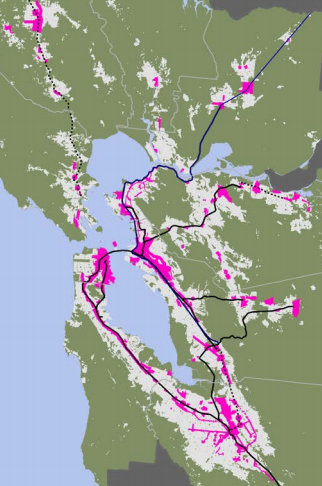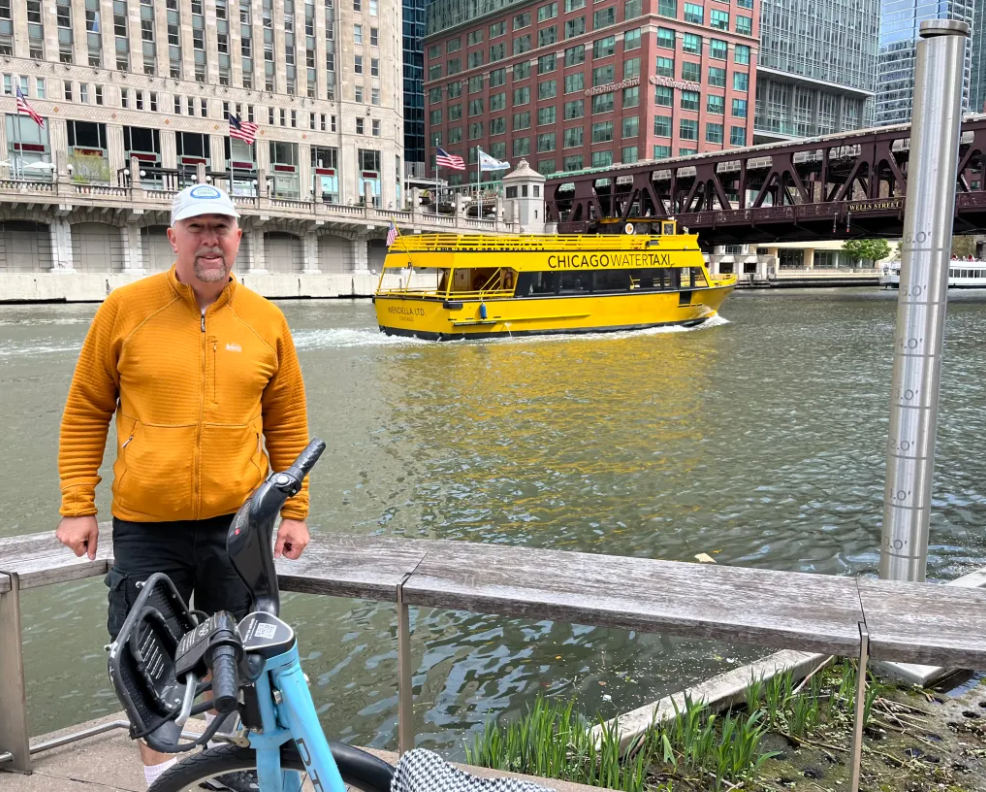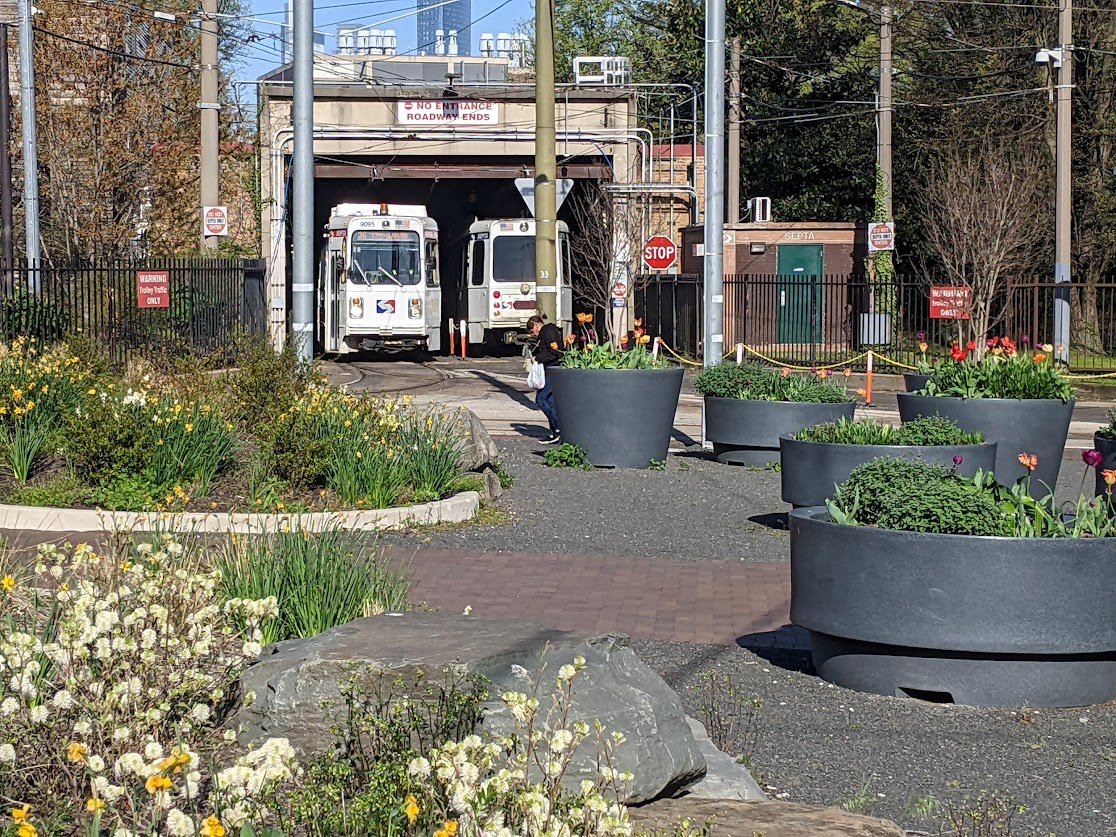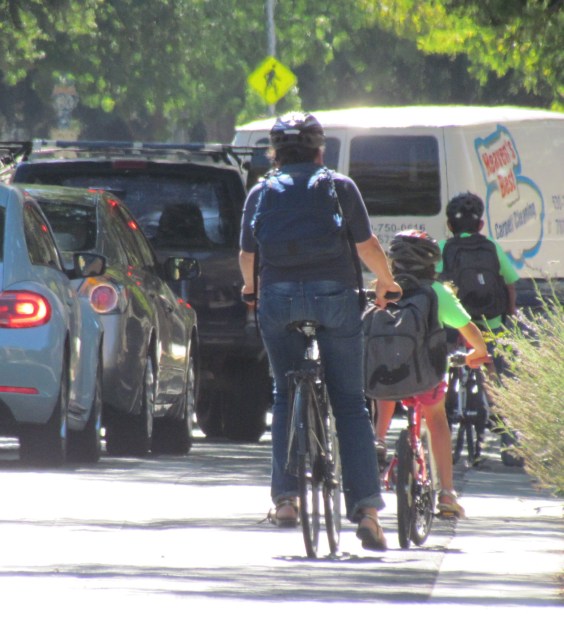Plan Bay Area Passes in a Room Full of Paranoid Conservative Activists
4:21 PM PDT on July 19, 2013
Plan Bay Area, the 25-year regional development and transportation funding strategy, was approved by the Metropolitan Transportation Commission and Association of Bay Area Governments last night. The commissions passed a plan that includes some highway expansions and won't meet the region's own goals for sustainable transportation, according to projections, but which nevertheless represents a step forward for smart growth.
The meeting ran past midnight after about five hours of public comment. Some spoke in support of the plan, while others urged commissioners to approve an alternative draft that would take stronger measures to encourage transit-oriented, affordable housing.
Most commenters, however, decried the plan as a fundamentally "totalitarian" imposition on property rights, defending the status quo of car-dependent suburban development patterns as "organically grown" communities. As the Greenbelt Alliance and the Marin Independent Journal have reported, some conservative groups rented buses to haul in folks to rail against the plan. Much of their rhetoric smacked of Agenda 21 conspiracy theories.
Georgine Scott kicked off the public comments by reading off a notice she had drafted, declaring that she could seize the assets of the MTC because Plan Bay Area is a violation of the constitution.
"This committee, as subservants and foreign agents, give your allegiance to the foreign corporation of the United States," Scott said. "I thus accept your ABAG/MTC actions, as said agents making rules ordinances and hearing decisions against the mandates of said constitution, as concerns property, as acts of treason, sedition, collusion, and money laundering. I may seize your respective properties as one of the people of the state of California following this notice, hereafter agreement."
Scott's reading elicited a roar of applause from a segment of the crowd, as did this comment from Richard Coleman of Orinda: "If we're going to have unelected, unaccountable bureaucrats impose high density, high-rise housing on us, then all of the officers, directors and employees of the Metropolitan Transportation Commission and Association of Bay Area Governments must surrender their drivers licenses, ditch their cars, and move into stack-and-pack housing."
Not everyone held the belief that planning for a less car-dependent future constituted a conspiracy to deprive people of their property rights.
When Joseph Turner, who identified himself as a senior from central Contra Costa County, bemoaned having to drive to a BART station to come to the meeting, "polluting all the way," some in the audience booed. When he added at the end of his comment that he'd like to "give up the car and help save the planet," many more applauded.
Overall, Plan Bay Area was lauded by land conservation advocacy groups like the Greenbelt Alliance and the National Resources Defense Council. The plan will "create communities where drives to your day-to-day needs will be shorter, or you may not even have to drive at all," said NRDC's Justin Horner.
In a blog post, Horner listed a number of ways in which he says Plan Bay Area is "remarkable":
- It is the only [Sustainable Communities Strategy] so far that includes all of its planned development within the current urban footprint. That means no new sprawl in the Bay Area for the next 30 years.
- The SCS not only meets its greenhouse gas emissions targets, but exceeds them.
- It is the only SCS that includes specific funding and programming for the preservation of open space.
- It is the only SCS that includes a special grant program specifically to foster inclusive infill development near transit; and
- The SCS includes funding for an ambitious expansion of a suite of transportation innovations, including carsharing, commuter incentives for transit, and the expansion of electric vehicle charging infrastructure.
As the SF Public Press reported this week, even though vehicle emissions under Plan Bay Area are estimated to be reduced by 15 percent on a per capita basis by 2035, emissions would still grow by 9 percent overall. Similarly, traffic crashes are still projected to rise by 18 percent by 2040 (while decreasing by 10 percent per capita). The plan would fail to meet several other regional targets set by MTC.
While MTC and ABAG didn't adopt the bolder "Equity, Environment and Jobs Alternative," which was drafted by the MTC along with sustainable planning advocacy groups, TransForm said that several amendments passed by the MTC "helped address our concerns." The EEJ alternative would have ditched plans to expand highways with high-occupancy toll lanes and done a better job of reducing housing and transportation costs for low-income residents.
An amendment introduced by Supervisor Scott Wiener, who sits on the MTC, proposed adding language to help ensure a certain percentage of revenue from California's cap-and-trade program would go toward transit capital projects and vehicle rehabs. But the percentage-based requirement was removed after encountering opposition from other commissioners, and the amendment was changed to only state that a "significant amount" would go toward transit. At the request of Supervisor David Campos, who also sits on the MTC, the amendment also specified that the funds could also go toward transit operations.
Despite the shortcoming and remaining challenges in Plan Bay Area, such as securing funding for transit, walking, and biking projects, sustainable planning advocates see it as an unprecedented step toward ending the era of car-dependent suburban sprawl in the region.
In an op-ed in the SF Chronicle in April, Greenbelt Alliance Executive Director Jeremy Madsen wrote that "in today’s Bay Area, the old model of a single-family home with a fenced yard and a long commute is neither affordable nor practical for everyone."
"There’s no question that it takes time and money to find the right places to build and update existing infrastructure," he wrote. "But with 2 million new residents projected in the coming decades, we need to start planning today."
Stay in touch
Sign up for our free newsletter
More from Streetsblog San Francisco
Streetsblog SF editor Roger Rudick offers constructive criticism of Chicago’s downtown bike network
"There were blocks that felt very safe and very secure," he said. "But then you're immediately – voom! – disgorged into three lanes of moving traffic with no protection."
Commentary: There is Zero Ambiguity to the West Portal Tragedy
What happened in West Portal was entirely predictable and preventable. The city must now close Ulloa to through traffic and make sure it can never happen again





